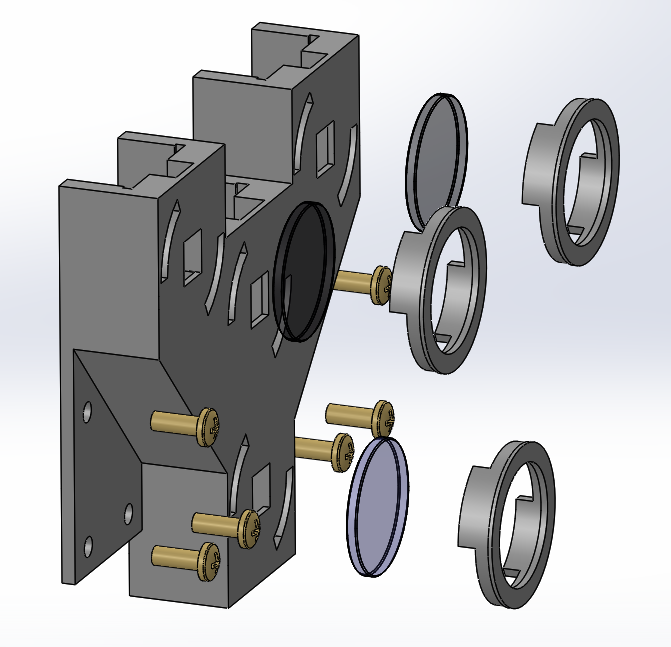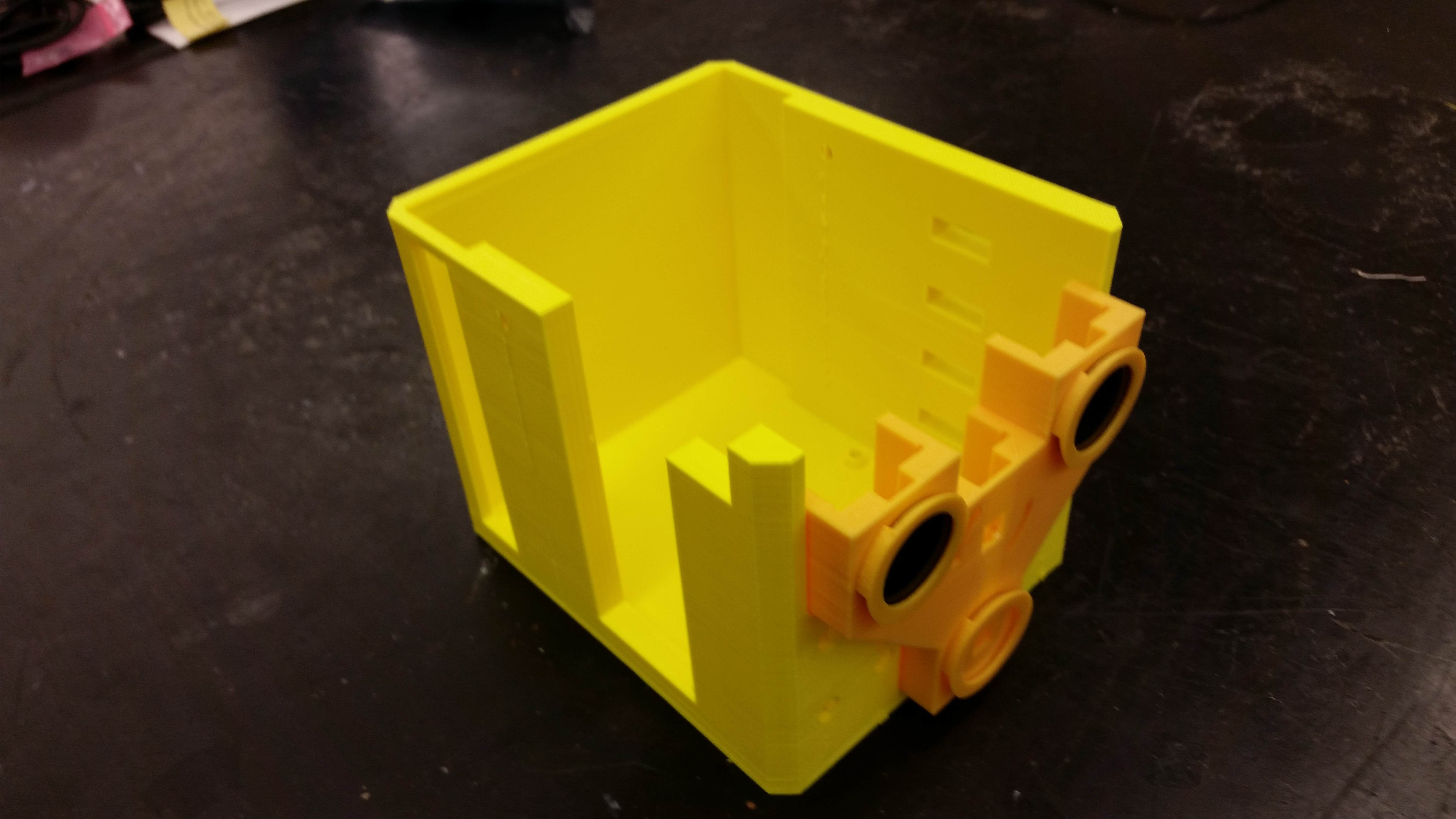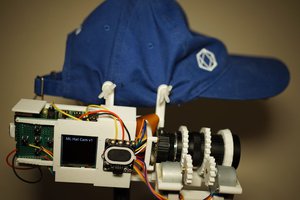The imager utilizes five raspberry pi computers, a TP-Link switch, a FLIR Lepton, raspberry pi noir cameras, a zippy 8000mAh battery, and some custom circuitry to provide power to the unit. We had only two iterations of the mechanical design. All of this can be 3D printed and assembled using 6-32 bolts and a screwdriver. Some other hardware also includes nylon spacers and all-thread to secure the stack of pi's together.
Synthetic Aperture Multispectral Imager
Using a cluster of five raspberry pis, a Flir Lepton and three Raspberry pi NOIR cameras with appropriate filters, an imager was born.
 Conrad Farnsworth
Conrad Farnsworth












 Jacob David C Cunningham
Jacob David C Cunningham

 Eric Link
Eric Link
I'm late to this party but I dig the visual design of this camera. Kudos!